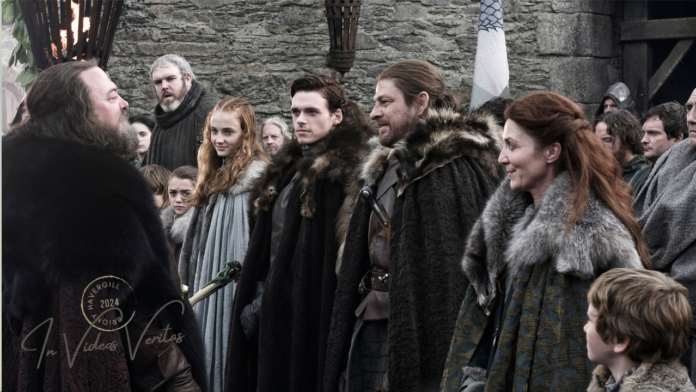Welcome to In Videos Veritas, where accuracy and artistic license fight it out in the coliseum of audience experience.
The goal of this column is not to lambast a piece of media for failing to deliver perfect ‘historical accuracy’, something that is impossible to define, impossible to achieve, and rarely ever an acknowledged intention of the creators anyway. Nor is it my goal to overly praise works that feel authentic to their period but fall flat in other areas. So, what am I doing?, you may wonder. To put it simply: it’s interesting to explore how fact and fun interact, with an ultimate focus on what we are willing to include, embellish, or omit from the former in order to attain the latter.
Spoilers for Game of Thrones ahead. This article will reference some adult themes, so please read at your own discretion.
This is the second of two articles about the historical inspirations behind HBO’s adaptations of George R. R. Martin’s works. And, like the previous edition of In Videos Veritas, this piece is partly inspired by the Rex Factor podcast, who discussed this topic in 2019. Since both series are works of fantasy rather than traditional period dramas, I won’t award Game of Thrones a separate fact and fun rating.
There are an incalculable amount of allusions to history, especially European history, in George R. R. Martin’s A Song of Ice and Fire series. It starts with the geography of Westeros, where you can speculate that the turbulent English Midlands become the battle-strewn Riverlands, the independent spirit of Scotland bleeds through into Westeros’ The North, complete with its own iteration of Hadrian’s Wall, and where late Medieval Spain is (controversially) represented by Dorne. It exists in warfare, where Damascus steel becomes Valyrian steel and Greek Fire becomes Wildfire. It exists in how the Westerosi people structure their society, how they dress, what they eat, and how they behave. I cannot cover every single reference in this article, so I will focus on a few key ones, starting with the most important of all.
Robert’s Rebellion and York’s Revolt
The years leading up to this battle were fraught, with Henry VI suffering from bouts of mental illness that left him unable to rule. The court had split into factions. Henry’s wife, the indomitable Margaret of Anjou, and the Earl of Somerset formed one faction intent on holding onto power in the name of Henry and Margaret’s son. Another faction was led by Richard of York, who was named Protector of The Realm in 1454, with Richard Neville, Earl of Warwick (later known as Warwick the Kingmaker) as a key ally. Henry VI recovered, briefly, in early 1455, and set about backing his wife and Somerset and removing York’s access to power. This was the last straw for the frustrated and overlooked York, so he raised an army and went to war against the King.
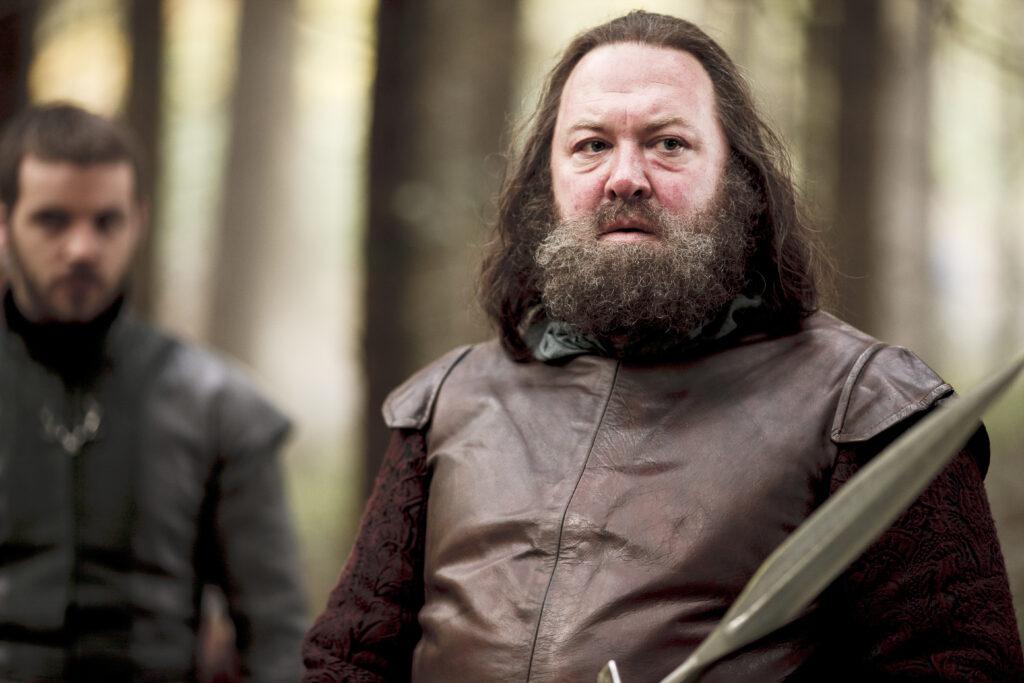
Now, to cut a long and bloody story of several years of on-and-off conflict short, York was killed at the Battle of Wakefield in 1460. There are differing accounts on the manner of York’s death, including a version where he was publicly mocked and then beheaded. His second son, Edmund, tried to flee the battle and was also killed, possibly executed. York’s head was put on a pike, with a paper crown atop it.
So, time for a check-in.
Edward, Earl of March, York’s eldest son, then took the lead of the York forces. He was young, tall, handsome and charming. Backed by a significant army, he defeated the Lancaster forces at the Battle of Mortimer’s Cross, and then again at the Battle of Towton (the bloodiest battle ever fought on English soil). Both battles were influenced by strange and wonderful natural phenomena which, when interpreted by inspired artists and writers, have proved richly laden with symbolism throughout the centuries. Edward was crowned hastily between these two battles, becoming King Edward IV.
The series of wars that set the groundwork for Game of Thrones are known as Robert’s Rebellion. This uprising ended Targaryen rule in Westeros through the death of King Aerys II, otherwise known as The Mad King, forcing Daenerys and her brother into exile, and placing Robert Baratheon on the throne with the assistance of Ned Stark and Jon Arryn. The reason that Robert and his allies go to war in A Song of Ice and Fire is somewhat more romantic, if more brutal, in that they are attempting to rescue Lyanna Stark, who has been kidnapped by Crown Prince Rhaegar Targaryen. This snowballs, and when Ned Stark’s father and brother go South to confront Rhaegar, they are brutally and publicly murdered.
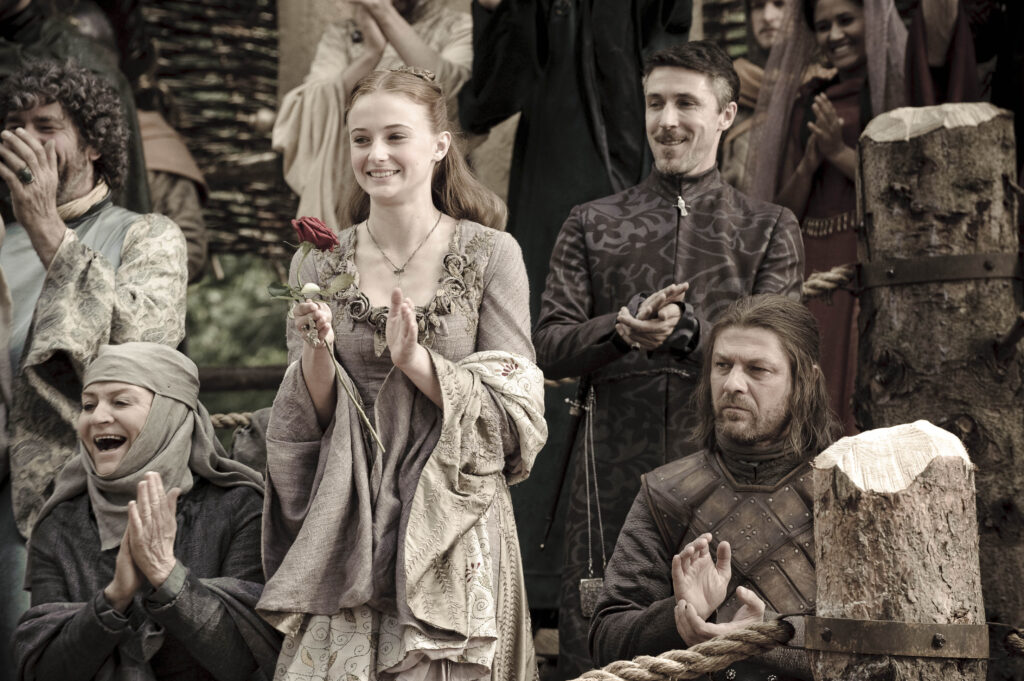
Sophie Turner as Sansa Stark, Sean Bean as Ned Stark, and Aiden Gillen as Petyr Baelish (centre back) in ‘Game of Thrones’ | Season 1, Episode 5 ‘The Wolf and The Lion | © HBO
The emotional intensity of this moment is certainly reminiscent of how Edward IV must have felt after learning about the death and subsequent humiliation of his own father and brother. In addition, the moniker of ‘Kingmaker’ could be applied to Jon Arryn, but also to Tywin Lannister, who ensures his family retain influence through the backing of massive inherited wealth. However, it seems highly unfair to compare the gentle Henry VI to The Mad King, considering the former was suffering some type of mental illness and the latter is an evil caricature.
The three Baratheon brothers are an allusion to the three surviving sons of York, King Edward IV; George, Duke of Clarence; and Richard, Duke of Gloucester (later Richard III). Robert Baratheon, renowned for his strength and charm as a young man, is a sure allusion to Edward IV. Both of them sunk into drunkenness and debauchery as they aged, and both suffered sudden deaths expedited by their indulgent lifestyles, Robert due to a hunting accident, Edward due to an illness possibly caught whilst fishing. Both left young sons, plunging their countries into chaos. The exuberant, overreaching, and ill-fated Renly Baratheon is heavily reminiscent of the middle York brother George, whose failed attempts to seize power resulted in his execution (reportedly by drowning in a vat of wine, a method referenced in the second series of Game of Thrones). Equally, the stoic, honourable, but somewhat cold Stannis Baratheon could be compared to Richard III, whose alleged cruelty lost him his reputation. Both died in battle, and their supporters moved on to back others. It is suspected that Richard III killed his nephews, the tragically famous Princes in the Tower, in order to take the throne. Stannis murdering his own daughter, an act so shocking it made some viewers consider abandoning the show altogether, could be considered the extreme version of this.
What is most interesting is perhaps the role of Ned Stark, who could be considered a patchwork of historical figures. In some aspects, namely his drive to avenge the wrongful deaths of his father and brother, he is Edward IV. In supporting Robert’s claim, he seems more like Warwick the Kingmaker. In favouring loyalty and justice, and supporting the claim of his brother in all but name, Robert, he becomes Richard III. It is notable that Richard III called the Princes in the Tower bastards when he disinherited them and took the throne for himself, though the evidence used to prove the boys were illegitimate is spurious. If Ned Stark had not only designated Joffrey and Tommen as bastards, but then confidently taken the throne for himself, he may have survived for a while as Richard III did, but Game of Thrones makes a point out of Ned’s death — famously, you win or you die.
In fiction, it makes sense to ascribe moral superiority to specific sides, and intensify the personal stakes in order to heighten the experience of the audience, who expect a clear narrative, resolution, and emotional pay off. Although Game of Thrones is a complex feat of storytelling, with a huge cast of well-rounded characters and entire books full of lore, history is of course more complex still, best exemplified by the chaos of the Wars of the Roses.
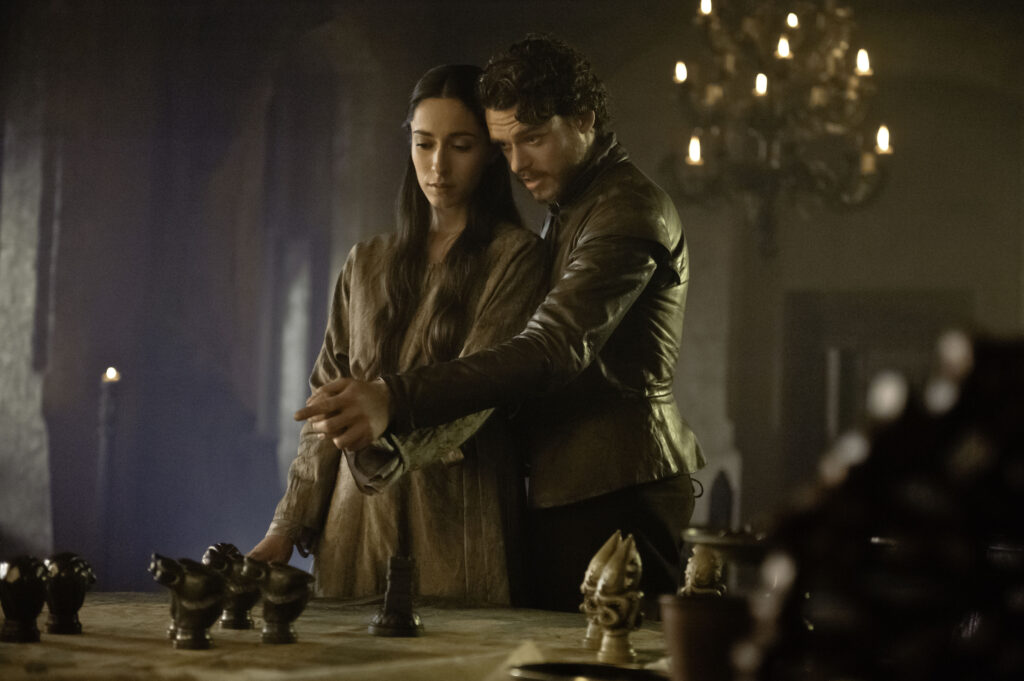
Lancaster, Lannister, York and Stark
In the early years of Edward IV’s reign, Warwick the Kingmaker attempted to secure a strategic marriage for him. The plan was for him to make a French alliance, but this fell through when Edward IV met and married Elizabeth Woodville. Although famously beautiful and charming, with long blonde hair, Elizabeth was deemed an “unsuitable” choice for a number of reasons. Firstly, she was the widow of a Lancastrian knight. Secondly, whilst Elizabeth’s mother was part of the nobility, her father was Baron of much lower rank, making Elizabeth herself of too low a rank to be married to a king. Finally, the wedding was secret, which always invites scandal.
This hasty love match is mirrored through Robb Stark’s marriage to Talisa Maegyr, although a closer match exists in the books, where Robb marries the mid-gentry daughter of a Lannister vassal instead. This is not where the similarities end, as Robb too is coded in the same language as Edward IV, the young, handsome king rushing to avenge his father.
Here is where allusions to the Wars of the Roses start to get messier and looser. Martin’s characters are not their historical inspirations, and the world they live in is not late-Medieval England; they make their own choices and react to what becomes an increasingly different set of circumstances. It does not mean there are no further references to history, just that these references tend to be to individual events, rather than to a wider historical context.
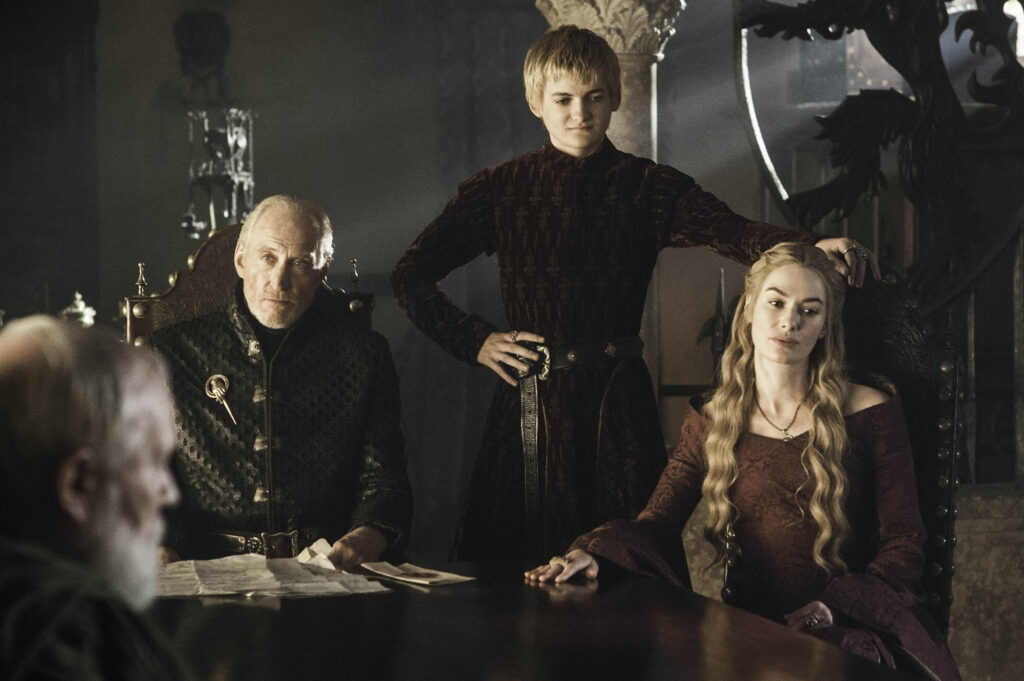
For example, the haunting iconography of the Princes in the Tower is used twice. First when Martyn and Willem Lannister, two young brothers captured as hostages by Robb’s forces, are murdered in their beds. Again when Robb’s little brothers, Bran and Rickon Stark, are presumed dead following the invasion of their home. The latter incident makes Sansa Stark the heir to Winterfell after Robb, a similar fate to Elizabeth of York, the sister of the Princes in the Tower.
It is also interesting to observe the similarities between Cersei Lannister and Margaret of Anjou, in how militantly she pursues her son’s claim to the throne. Margaret, the “she-wolf”, was a controversial figure, and rumours abounded about her son, Edward’s, legitimacy and character. Joffrey certainly seems reminiscent of some of the more outlandish and colourful rumours regarding Prince Edward of Lancaster. It is horrifying to know that Cersei’s infamous walk of shame also takes precedence from real recorded cases, such as that of Jane Shore, Edward IV’s former mistress, who was paraded through the streets of London in her underclothes for alleged promiscuity.
Finally, we come to Jon Snow and Daenerys Targaryen. They could represent Henry VII and Elizabeth of York, whose marriage is often regarded as the end of the Wars of the Roses. Like Daenerys, Henry Tudor was forced into exile as a child, and returned several years later with a mercenary army and a tenuous claim to the throne. Like Jon, Elizabeth of York was a royal child whose parents had made a secret love match, uniting North and South. Obviously, Jon and Daenerys’ story ends in tragedy in the show, but we have yet to see how it’ll end in the books.
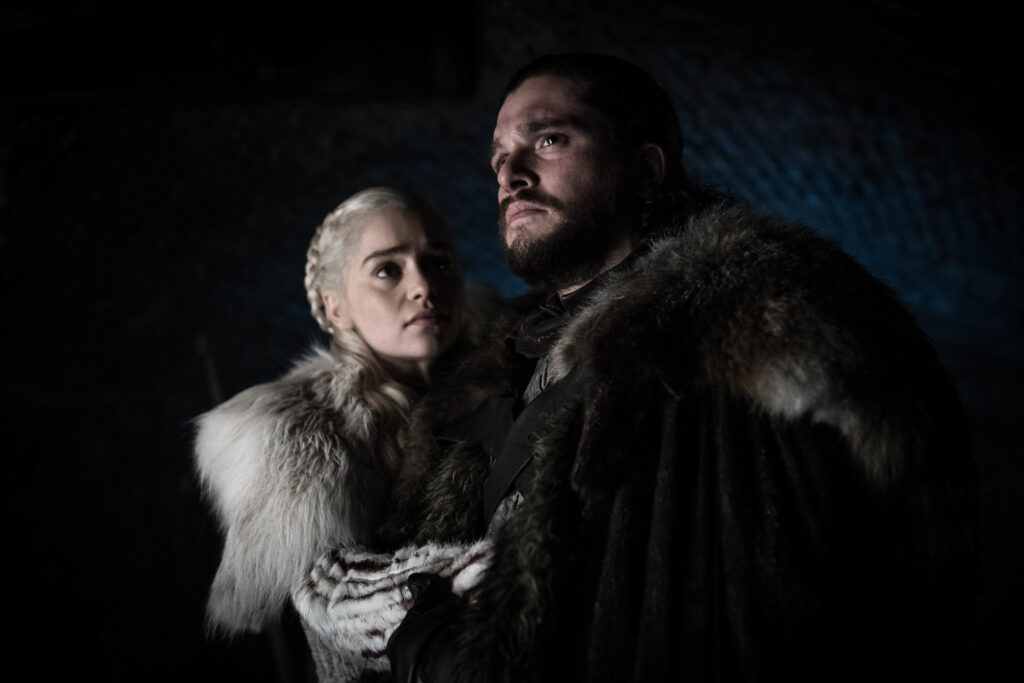
The Real King’s Landing Courtiers
The Lannisters are partly based on one of the most interesting and infamous families of the Renaissance, the Borgias.
Rodrigo Borgia started his career as a cardinal in Spain, and ended up becoming Pope Alexander VI, amassing huge wealth and notoriety during his rise. His most famous children, Cesare, Lucrezia, and Giovanni (also called Juan), each attracted the same acclaim and infamy. Cesare was intensely clever but volatile, inspiring Niccolò Machiavelli’s The Prince through his endless plotting. Lucrezia was beautiful, but allegedly treacherous, facing accusations of poisonings, adultery, and incest with her brother (most of which lack any evidence at all). Giovanni was a soldier, the black sheep of his family, later murdered (possibly by his brother). It is easy to think of the Lannisters as manifestations of the most heinous of the Borgia rumours, with Rodrigo as Tywin, Lucrezia as Cersei, and Jaime and Tyrion as combinations of Cesare and Giovanni. There was even another Borgia sibling called Gioffre, who married a woman called Sancha!
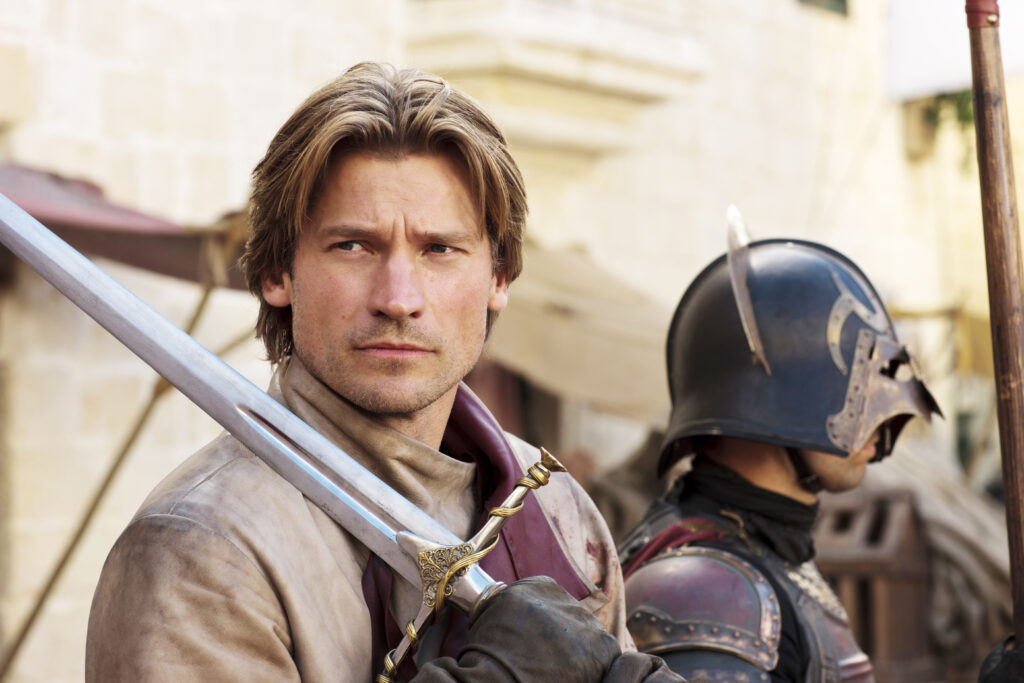
Speaking of Sansa, she bears quite the resemblance to Elizabeth I. Alternatively in and out of favour during their childhoods, daughters of a parent beheaded for treason, and constantly implicated in plots during early adulthood, both women face struggles to survive. Like Sansa, Elizabeth I also had to deal with men who only wished to marry her for her claim, putting her in intense danger with their attempts to do so. In the contentious eighth series, Sansa Stark becomes Queen in the North, a confident, competent ruler, respected by her people and comfortable ruling as a single woman. With her red hair and tall stature she is the mirror image of Elizabeth I upon her accession. The way in which Sansa is depicted using her hair and clothing to adapt, build alliances, and express herself is also similar to Elizabeth I, who was famed for her elaborate wardrobe as Queen, but praised for her tactical modesty when she was simply sister to the King.
How Fantasy Interacts with Reality
It is often impossible to untangle individual historical influences without the input of the writers and showrunners. There are hundreds of references, either intentional or unintentional, and many of them may be coincidences. Was Petyr Baelish inspired by the tricky courtier Thomas Cromwell? Is Varys the Master of Whisperers based on Francis Walsingham, the Elizabethan spymaster? Is Tommen an iteration of the boy king Edward VI, known for his zealous devotion to the church? Are the military triumphs of Daenerys supposed to mimic those of Eleanor of Aquitaine? Are Ellaria Sand and her many children the warlike Isabella of Castile and her daughters?
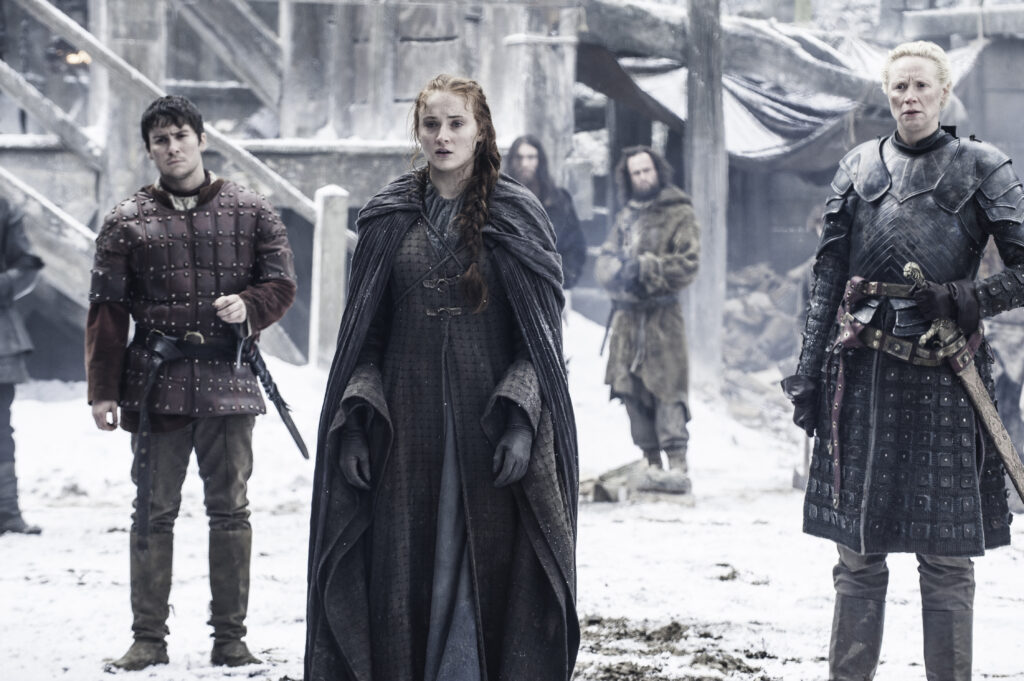
The point is that, as complex, nuanced, and expansive as Game of Thrones is, history is infinitely more so, and is often contradictory, just to make things even more convoluted. Whilst we know that dragons did not fly overhead the warring Yorks and Lancasters, the living dead didn’t stalk North of the Scottish border, and magic couldn’t conjure easy solutions to the troubles of the past, fact is often stranger than fiction.
Part of the joy and horror of watching Game of Thrones is getting to explore an alternate world, one that you can choose to invest in or engage with, or to step away from. If The Red Wedding upsets you, you can turn off the television. If it interests you in the morbid way crime has interested people for centuries, you can read about The Black Dinner. Unlike the real world, there is no moral obligation to engage or disengage. You can explore difficult ideas through the safety of fiction, offering both a respite from reality and holding a mirror up to it.
Rating: 7/10
Words by Briony Havergill
Some selected sources and recommendations: BBC HistoryExtra (website and podcast); Betwixt the Sheets: A History of Sex, Scandal, and Society (podcast, 2022-); Blood, Fire and Gold: The Story of Elizabeth I & Catherine De Medici (Estelle Paranque 2022); Game of Queens, The Women Who Made Sixteenth-century Europe (Sarah Gristwood, 2016); Game of Thrones and Gaming the History Classroom (Sarah M. Spalding, 2021); Game of Thrones is Based in History—Outdated History (Kavita Mudan Finn, 2019); Gone Medieval (podcast, 2021-); History is Sexy (podcast, 2018-); ‘I Am Your King’: Authority in Game of Thrones (J. M. Fathallah, 2017); Not Just the Tudors (podcast, 2021-); Rex Factor (podcast, 2010-); The Borgias: Power and Fortune (Paul Strathern, 2019); The Plantagenets: The Kings Who Made England (Dan Jones, 2012); The Private Lives of the Tudors: Uncovering the Secrets of Britain’s Greatest Dynasty (Tracy Borman, 2016); The Queen in the North: Conceptualising International Relations, Popular Culture, Gender, and How Feminine Power Won the Game of Thrones (Amanda DiGioia, 2020); The Shame Game, from Guinevere to Cersei: Adultery, Treason, and Betrayal (Larissa Tracy, 2019); What’s Wrong with Medievalism? Tolkien, the Strugatsky Brothers, and the Question of the Ideology of Fantasy (Irina Ruppo Malone, 2016).
Support The Indiependent
We’re trying to raise £200 a month to help cover our operational costs. This includes our ‘Writer of the Month’ awards, where we recognise the amazing work produced by our contributor team. If you’ve enjoyed reading our site, we’d really appreciate it if you could donate to The Indiependent. Whether you can give £1 or £10, you’d be making a huge difference to our small team.
